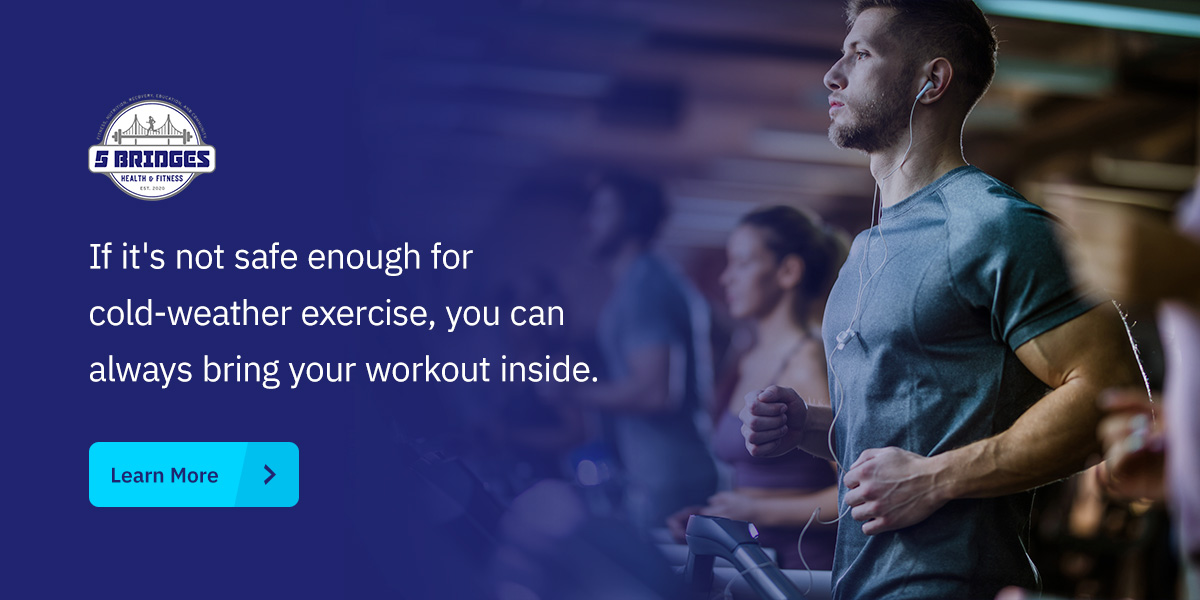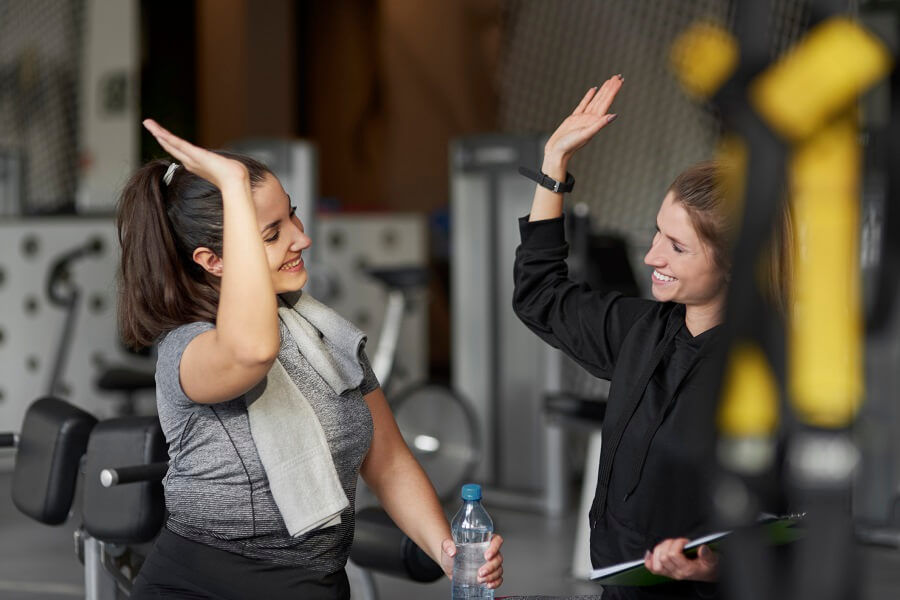Working Out in the Winter
Working Out in the Winter
Posted on: October 17, 2023 in WinterWhen it’s dark, gray and chilly outside, it’s still important to stay active, even if you are chasing after a goal months away. A winter workout does pose some challenges — but with the right strategy, you can safely and comfortably maintain your health and wellness while exercising outdoors.
Bundle Up: Choosing The Right Winter Workout Clothes
Whether you plan on running in your neighborhood, hitting some mountain biking trails or taking a few spins around an ice rink, it’s important to wear the right clothing and gear for cold-weather exercise. Intense physical activity can make you warm up quickly. Dress in layers so you can take clothing on and off as needed.
Here’s how you’d want to layer your winter workout clothes to exercise in the cold:
- First layer: Choose a moisture-wicking material like polypropylene or polyester so your sweat can easily evaporate.
- Second layer: Next, add a layer of insulation. This can be a material like polyester fleece or wool to help trap the heat.
- Third layer: Your last layer should be rain- and wind-repellant to keep you dry in unfavorable wintry conditions.
Don’t forget to wear gloves and a hat to protect your extremities!
Check the Weather
If you plan on working out in the cold, you need to check the weather before heading outdoors. It’s not just the temperature that you should pay attention to — factors like moisture and the wind can play a big part in how cold you’ll feel.
It can be dangerous to exercise outside even if you’re layered up, especially when the wind chill is low. You could be at risk for frostbite and hypothermia. To stay safe, be sure you can recognize the signs of both these conditions.
Warning signs of frostbite include:
- Cold skin
- Dark or discolored skin
- Numbness
- Stinging sensation
- Loss of feeling
Possible symptoms of hypothermia include:
- Shivering
- Slurred speech
- Confusion
- Drowsiness or fatigue
- Loss of coordination
Fuel Up: Eating Right
When exercising in cold weather, your body will start to break down glycogen, which is a type of carbohydrate, in your muscles. Be sure to fuel up before, during and after your workout.
After you’ve exercised, try to eat a carbohydrate- and protein-rich snack or meal within 30 to 60 minutes. You need something that will help your muscles repair and replenish glycogen stores, especially if you’ll be working out again the following day.
Even if you don’t feel thirsty, it’s important to stay hydrated. You can still become dehydrated in the winter even if you aren’t excessively sweating. Drink plenty of water before, during and after your workout.
Take Time to Stretch
Stretching is an essential part of any workout routine that becomes even more necessary as the weather cools. In the winter, your muscles will contract as a means to conserve heat, which can cause them to become tighter and increase your risk of injury if you start a workout without warming them up properly. You can incorporate stretching at every phase of your winter exercise to prevent injuries.
The Warmup
Jumping right into stretching can be just as dangerous as skipping it entirely. Jog or walk at a brisk pace for a few minutes to get your blood flowing before your stretching routine.
Once your jog or walk is out of the way, you can start stretching. In colder weather, gentle repetitive motions offer more significant benefits than standing still and holding a pose. By staying in motion through stretches like forward lunges, you’ll elevate your heart rate. You’ll also keep your muscles loose and ready to work.
The Middle of the Workout
If you come to a stop at any point in your winter exercise, dynamic stretches will keep your heart rate up and prevent your muscles from cooling down. Exercises like arm circles, lunges or jogging in place will keep your blood pumping and lessen the chance of your muscles contracting.
The Cool-Down
Stretching after your workout is especially vital in the winter. Once you finish working out, take some time to perform slow, measured static stretching. This cool-down period will help you bring down your heart rate and relax the muscles you just used. As you stretch, make sure to stop if you feel any pain to prevent an injury from occurring.
Bring Your Workout Inside
If it’s not safe enough for cold-weather exercise, you can always bring your workout inside during the holiday season. At 5 Bridges Health & Fitness, you’ll find a team of certified trainers ready to help you reach your fitness goals. We have several plans available depending on what you’re looking for.
Ready to launch your health and fitness transformation? Join today!




